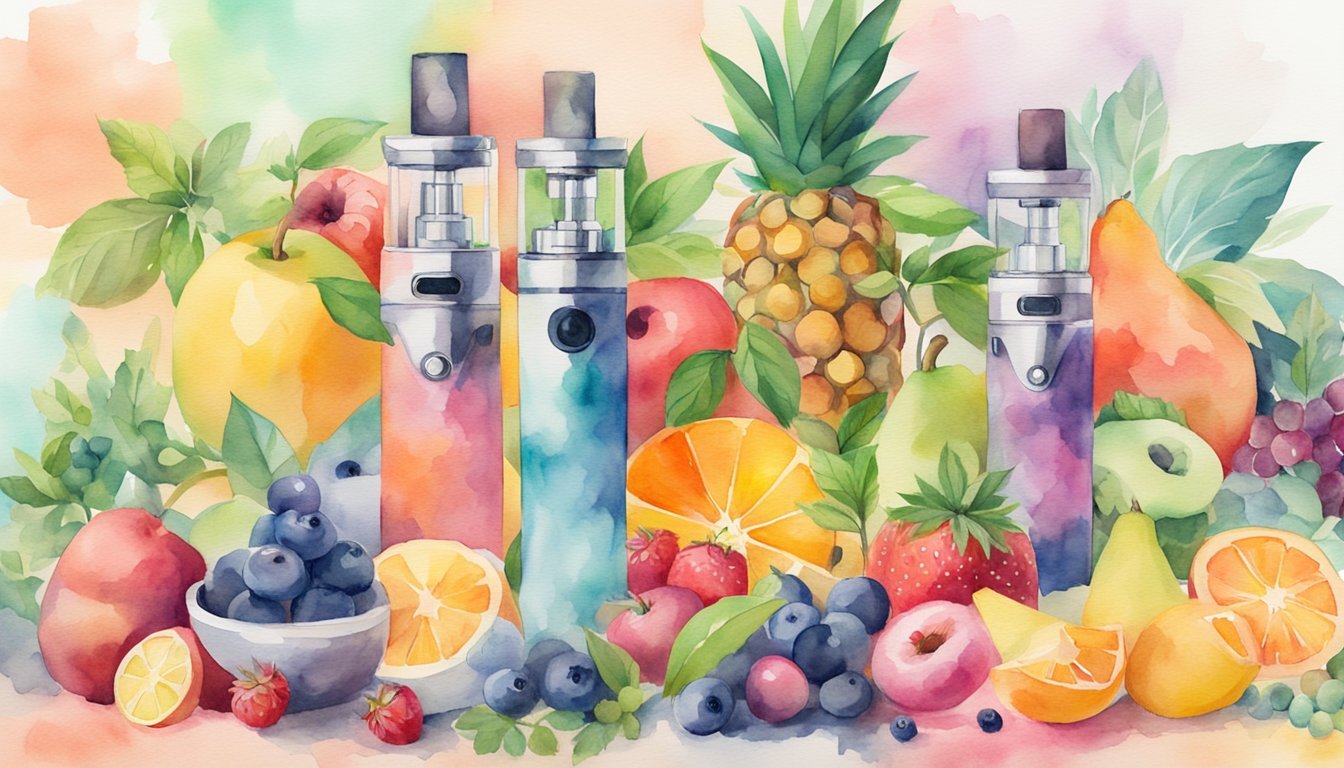Understanding Healthy Vapes

When considering the concept of healthy vaping, it is crucial to explore the components of vapes, their implications for health and wellness, and the regulatory environment that governs their use.
Components and Alternatives
Vaping devices, commonly referred to as e-cigarettes or vape pens, are designed to heat a liquid (vape juice) until it becomes an aerosol, which users inhale. Traditional e-cigarettes contain nicotine, but there are also nicotine-free vape options. A key concern is the presence of harmful chemicals in some vape juices, such as vitamin E acetate, which has been linked to lung injury. In response, producers have introduced alternatives, such as personal diffusers and healthiest vape pen devices, which might include ingredients like essential oils or vitamins.
Essential Components of Vape Juice:
- Nicotine (in nicotine vapes)
- Flavorings
- Humectants (commonly propylene glycol and vegetable glycerin)
- Additives (in certain products)
Effects on Health and Wellness
While some users consider nicotine-free vape and non-nicotine vape pens as a way to reduce exposure to nicotine, the health impact of inhaling vaporized substances, even without nicotine, remains uncertain. According to the American Heart Association, frequent vaping may suggest dependence and increase health risks. Proponents of so-called healthy vape alternatives claim that these reduce exposure to harmful substances, but thorough research into the long-term effects is ongoing.
Health Considerations:
- Potential reduction in exposure to carcinogens compared to traditional cigarettes
- Risks associated with long-term inhalation of non-nicotine substances
- The variance in risk based on frequency and volume of usage
Navigating Regulations
Regulatory bodies have been working to set parameters around the sale and marketing of vaping products. The term healthy vape is not distinctly defined in regulatory texts, which makes it challenging to navigate claims made by vape manufacturers. No-nicotine vapes and products labeled as healthiest vapes are under scrutiny to ensure they meet safety standards. Consumers should stay informed about the most recent regulations to make safe choices on vaping products.
Regulatory Aspects to Consider:
- Marketing restrictions on vaping products
- Compliance with safety standards
- Changes in legal status of ingredients and devices
In the discourse of healthy vaping, it is important to understand the different components that make up vape products, the health implications tied to their use, and the complex regulatory landscape overseeing their distribution and sale.
Lifestyle and Vaping Habits

Vaping has emerged as a significant element in discussions around smoking cessation and cultural trends, especially among younger demographics. It is crucial to understand the complexity of vaping’s role in lifestyle choices and its perceived benefits over traditional smoking.
Quitting Smoking and Nicotine Replacement
Many individuals turn to vaping as a strategy to manage nicotine cravings and as an aid for quitting smoking. Vaping devices, such as Juul, offer a variety of nicotine strengths, some even offering nicotine-free options, allowing users to gradually reduce their nicotine intake. The Food and Drug Administration (FDA) has not approved vaping as a smoking cessation device, yet some smokers have adopted e-cigarettes in their smoking cessation efforts.
Vaping Culture Among Young People
Vaping has profoundly impacted youth culture, with devices being popular for their sleek designs and flavors. This popularity has led to concerns about vaping re-normalizing smoking habits among young people, potentially leading to nicotine addiction. While some teens may start vaping for relaxation or to satisfy their curiosity about THC-containing products, the FDA is actively regulating the marketing and sale of vaping products to minors to prevent early onset of addiction.

